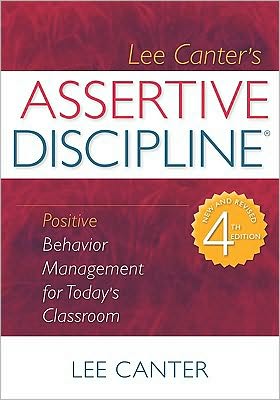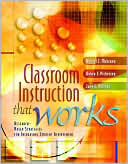Assertive Discipline: Positive Behavior Management for Today's Classroom
In this revised and updated 4th edition of his classic Assertive Discipline, Lee Canter presents his three-step positive behavior management model that includes 1) how to give explicit directions, 2) how to positively recognize students who follow directions, and 3) how to take corrective actions when students choose not to follow directions. In this edition, educators will learn:\ How to develop a strong teacher voice\ How to establish and maintain high expectations for student behavior\ How...
Search in google:
For 25 years, this American classic has shown how effective classroom behavior management goes hand in hand with master teaching. In this third edition, greater emphasis is placed on a proactive approach to dealing with student behavior, as well as the value of building positive relationships with students.
About the Author xiIntroduction 1Section 1 Becoming an Effective Classroom Manager1 You Can Be an Effective Classroom Manager 3Why Is Classroom Management Such a Significant Issue for Today's Teachers? 3Why Are Some Teachers Such Effective Classroom Managers? 5You Can Learn to Be an Effective Classroom Manager 62 Develop Your Teacher Voice 9Attributes of the Teacher Voice 9Building Your Teacher Voice 133 Hold High Expectations 15Expect 100 Percent Compliance With Your Directions 100 Percent of the Time 15Allow No Excuses for Disruptive Behavior 16Always Sweat the Small Stuff 17Never Back Down 18Let Students Know You Are Not Going Away 18Avoid Excessive Praise 19The Lesson of High-Stakes Testing Days 20Section 2 Developing Your Classroom Discipline Plan4 Establish Rules 23Advantages of Using a Classroom Discipline Plan 24Developing Your Rules 255 Determine Positive Support Strategies 27Positive Support for Individual Students 27Classwide Positive Support: Points on the Board 296 Determine Corrective Actions 33Why You Need to Take Corrective Actions 33Guidelines for Planning the Use of Corrective Actions 34Before You Implement Your Classroom Management Plan 37Section 3 Teaching Responsible Behavior7 Teach Policies and Procedures at the Beginning of the School Year 39Determine Policies and Procedures 39Planning to Teach a Lesson on Responsible Behavior 41Responsible Behavior Lesson format 448 Develop a Responsible Behavior Curriculum 47Determine the Order in Which You Will Teach the Content 47Sample Responsible Behavior Curriculums 48Section 4 Utilizing the Behavior ManagementCycle9 Effectively Communicate Explicit Directions 57The Behavior Management Cycle 57Step One: Clearly Communicate Explicit Directions 5810 Utilize Behavioral Narration 63The Trap of Responding to Off-Task Students 63Behavioral Narration 63Utilizing Behavioral Narration to Motivate Students to Get On Task 67Utilizing Behavioral Narration to Keep Students On Task During Instructional Activities 69Behavioral Narration Is No Substitute for Effective Instruction 7011 Take Corrective Actions 71Guidelines to Take Corrective Actions in Your Classroom 71How Students Will Test You 7412 Teach Students to Manage Their Own Behavior 81The Levels of Classroom Management Structure 81Level One: Highly Structured 82Level Two: Moving Toward Self-Management 84Level Three: Student Self-Management 85Recalibrate 86Section 5 Reducing Disruptive Behavior13 Instructional Strategies That Reduce Disruptive Behavior 89How to Provide Opportunities to Respond 89Opportunity to Respond Strategies 90Additional Strategies to Engage Students and Reduce Disruptive Behavior 96Section 6 Working With Difficult Students14 Build Positive Relationships With Students 103The Trust Issue 103Steps to Earn the Trust of All Your Students 10515 Develop Individualized Behavior Plans 115Guidelines to Developing an Individualized Behavior Plan 11516 You Can't Do It on Your Own: Getting the Support You Need to Deal With Difficult Students 119The Myth of the Good Teacher 119Initial Steps to Obtain Support From Parents and Administrators 120The Importance of Parental Support 122Building Positive Relationships With Parents 122Home-School Behavior Contract 126Pulling It All Together 127The Importance of Getting Support From Your Administrators 127AppendixMentors, Coaches, and School Leadership Teams: Structures to Support Classroom Teachers' Behavior Management Efforts 1311 An Introduction to the Real Time Classroom Coaching Model 133The Birth of the Real Time Classroom Coaching Model 133Real-Time Feedback 137Advantages of the Real Time Classroom Coaching Model 140Supporting Struggling Teachers 1422 An Introduction to Establishing a Schoolwide Assertive Discipline Program 143Why So Many Schools' Behavior Management Efforts Are Ineffective 143Schools Can Transform Their Learning Climate 146Attributes of Schools With Effective Schoolwide Behavior Management Efforts 146References and Resources 155Index 161








